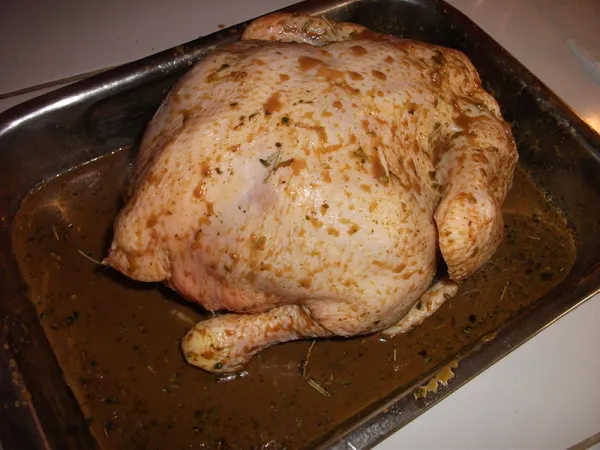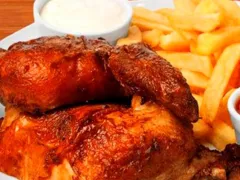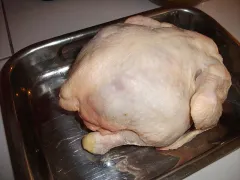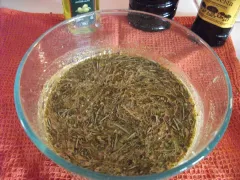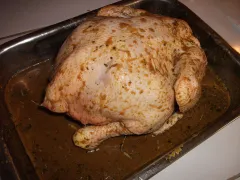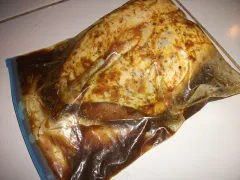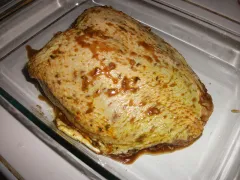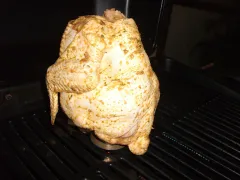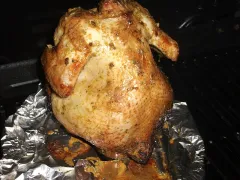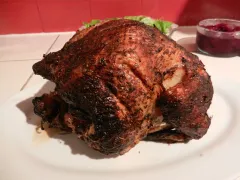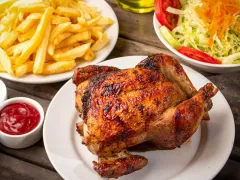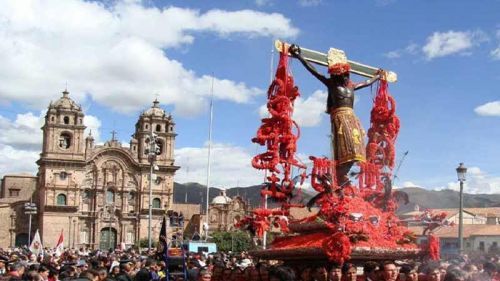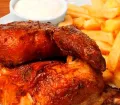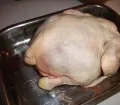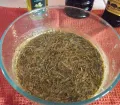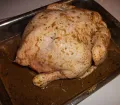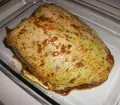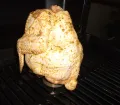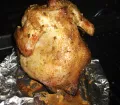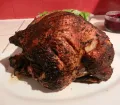Pollo a la Brasa, also known as Peruvian charcoal chicken, is a beloved Peruvian dish consisting of crunchy and juicy charcoal-grilled chicken served with French fries and a salad. It's one of the most consumed dishes in the country.
Originally only seasoned with salt and cooked over charcoal, today the chicken is marinated in a "secret" mixture mainly consisting of vinegar, dark beer or soy sauce, salt, pepper, chili, rosemary or cumin and then grilled in special Pollo a la brasa ovens.
Served with thick French fries and a small salad, it's eaten with the fingers. Every year on the third Sunday of July, Peruvians celebrate one of their beloved and most consumed dishes on the Dia del Pollo a la Brasa.
And if you want to try or miss this Peruvian favorite, you can make it easily at home. Even though most of us surely don’t have a special Pollo a la Brasa oven and only a few a rotisserie kit, no problem; all you need is a gas or even better charcoal grill to get the real charcoal flavor, but it works in an oven as well.
So, already hungry? Then just follow our easy recipe for Peruvian Pollo a la Brasa. And in case a whole chicken is a bit much for you, you as well can use chicken chicken pieces (bones in, skin on). Delicious!
LimaEasy’s Recipe for homemade Pollo a la Brasa
Ingredients:
- Whole chicken (or bone in skin on chicken pieces)
- 2 Tbsp soy sauce
- Juice of 2 limes
- 1 Tbsp olive oil
- 1 Tbsp balsamic vinegar
- 120 ml (1/2 cup) dark beer
- 1Tbsp huacatay paste (optional)
- 1Tbsp aji panca paste (or aji panca spice)
- 4 cloves garlic, minced
- 1 tsp fresh ginger, minced
- 1 tsp ground cumin
- 1 tsp oregano
- 1 tsp rosemary
- 1 tsp salt
- 1 tsp black pepper
Preparation:
- On the day before you want to enjoy your Peruvian Pollo a la Brasa, thoroughly clean and wash the chicken and place in a large pan (or ziplock). Then combine all other ingredients to get the “secret” marinade.
- Pour the marinade over the chicken and cover with clingfilm (or use a ziplock) and leave in the fridge to marinate. Every two or three hours remove from fridge and spoon a bit of the marinade that accumulated on the bottom of your pan over the chicken or, if you use a ziplock, “massage” the chicken a bit, so the chicken can absorb all the nice flavors. Return the chicken to the fridge. Leave overnight in the fridge.
- Using a BBQ: on the day of roasting the chicken prepare your charcoal grill, so let the flames die down and the coals turn ashen, then mound the coal up on one side. In case you use a gas grill preheat to medium-high heat, about 190°C (375°F). Remove the chicken from the fridge and spoon a bit of marinade over it. Set the remaining marinade aside. If you have a rotisserie kit for your grill, perfect. Just place the chicken on it (best tie the wings and legs with a twine or string). Otherwise, you have to get a bit creative and use, for example, the beer can from which you poured the beer for the marinade. Leave the can about half-full with beer, add a tablespoon or two of the marinade and place the chicken, legs down, onto it. Then, standing upright on the can, place the chicken directly on the preheated grill. Close the lid and cook the chicken. For extra Peruvian flavors, tenderness and juiciness brush a bit of the remaining marinade onto the chicken every 10 to 15 minutes. Once the chicken is nicely browned, the meat is tender and the juices run clear (depending on the size of the chicken this might take 1 to 1.5 hours) remove it from the grill and, if applicable, discard the beer can. Cover chicken with aluminum foil and allow to rest for 10 minutes.
- Using an oven: on the day of roasting the chicken preheat your oven to 200°C (400°F). As already described above, if you have a rotisserie kit for your oven, perfect. After removing the chicken from the fridge and brushing some marinade onto it, just place it on the rotisserie (best tie the wings and legs with a twine or string). Otherwise, you can as well use the beer can from which you poured the 1beer for the marinade. Leave the can about half-full with beer, add a tablespoon or two of the marinade and place the chicken legs down onto it. Then, standing upright on the can and best on a tray, place the chicken into your oven. Or if these two options aren’t for you or you are using chicken pieces, just place the chicken into a baking pan, spread some marinade over it and shove it into the oven. As you are already missing out on the BBQ flavor, brush a bit of the remaining marinade onto the chicken every 10 to 15 minutes for extra Peruvian flavoring. Once the chicken is nicely browned, the meat is tender and the juices run clear (if you are using a whole chicken this might take around 1 to 1.5 hours, breast, thighs, legs anything between 30 to 45 minutes) remove it from the oven and, if applicable, discard the beer can. Cover the chicken with aluminum foil and allow to rest for 10 minutes.
- Then, if necessary, cut the chicken into quarters and serve with thick, crispy French fries, a nice green salad and next to ketchup and mayonnaise, of course, some aji criollo, salsa de rocoto or salsa verde.
- Enjoy!






